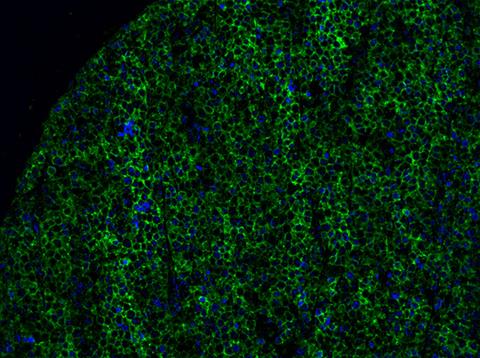Read this story on the new ONJCRI website www.onjcri.org.au
Cancer immunology experts from the Olivia Newton-John Cancer Research Institute (as the La Trobe University School of Cancer Medicine) have joined forces with the Peter Doherty Institute for Infection and Immunity (Doherty Institute) and CSL Limited to determine the molecular basis for how an important component of the immune system, called gamma-delta T cells, detects infections and cancers.
Research Institute (as the La Trobe University School of Cancer Medicine) have joined forces with the Peter Doherty Institute for Infection and Immunity (Doherty Institute) and CSL Limited to determine the molecular basis for how an important component of the immune system, called gamma-delta T cells, detects infections and cancers.
Published in Science, the research team say this breakthrough of discovering how gamma-delta T cells become activated addresses a question that has baffled scientists for 25 years.
Co-lead author, Dr Andreas Behren, ONJCRI Tumour Immunology Laboratory Head said “these findings represent a key advance in our understanding of how gamma-delta T cells function to protect us from disease.”
“We believe that this breakthrough could ultimately lead to the development of new and improved immunotherapy treatments for millions of people worldwide impacted by cancer and infection,” he said.
The study was conducted by University of Melbourne’s Marc Rigau, PhD student at the Doherty Institute, was co-led by Dr Andreas Behren, a Laboratory Head, Dr Adam Uldrich, a Senior Research Fellow at the Doherty Institute, and Professor Dale Godfrey a laboratory head at the Doherty Institute. Prof Jonathan Cebon, ONJCRI Cancer Immunobiology Program Head was also an author on the paper and part of the original research team for the project at ONJCRI’s predecessor the Ludwig Institute.
“This is an exciting finding for the global scientific community,” said Dr Behren, “because there is great potential that these findings could eventually help to develop new immunotherapy treatments for cancer and infections.”
Dr Uldrich explained that gamma-delta T cells are known to respond to the presence of small molecules, known as phosphoantigens, that are produced by bacteria and cancer cells. “This leads to the activation of these gamma-delta T cells and often eradication of the diseased cells,” Dr Uldrich said.
Professor Godfrey said “Up until now, scientists have struggled to understand the fundamental question of how phosphoantigens are detected by gamma-delta T cells.”
“We found that molecules on the surface of the gamma-delta T cells, called T cell receptors, bind to another molecule called butyrophilin 2A1 that is present on many different cell types throughout the body, including cancer cells,” Professor Godfrey said.
“This research project demonstrates the power of collaboration between academia and industry. Nearly a decade ago, we identified Butyrophilin 2A1 as a potential therapeutic target but its precise biological function remained elusive,” said Dr Con Panousis, Senior Director Molecular Biology, CSL Limited and an author on the paper.
“This discovery makes a significant contribution to our understanding of how gamma-delta T cells work and in doing so, paves the way for translating this research into new immunotherapies for the treatment of serious human disease.”
The ONJCRI team will now focus their efforts on the next phase of the project where they will look for opportunities to apply the findings to particular cancers and other diseases.
This research has been made possible thanks to funding from the Australian Research Council, National Health and Medical Research Council, Cancer Council Victoria, the Victorian Cancer Agency and CSL Limited.
The collaborators have filed patents surrounding their discovery.
Read the paper in Science
Find out more about the Doherty Institute
Find out more about CSL Limited
Image description: Part of a melanoma tumour with expression of butyrophilin 2A1 highlighted in green and cell nuclei in blue.